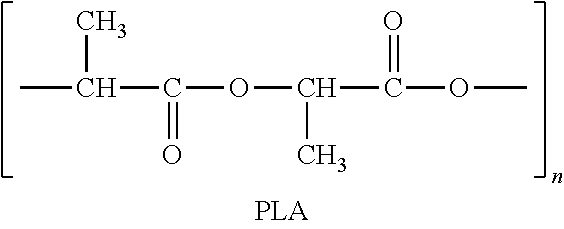Degradable Recycling Material
- Summary
- Abstract
- Description
- Claims
- Application Information
AI Technical Summary
Benefits of technology
Problems solved by technology
Method used
Image
Examples
Embodiment Construction
[0029]Although the biodegradation of P(3HB-co-4HB) product is easy to occur in soil, sludge and sea water, the biodegradation rate in water in the absence of microorganisms is still very slow (Saito, Yuji, Shigeo Nakamura, Masaya Hiramitsu and Yoshiharu Doi, “Microbial Synthesis and Properties of Poly(3-hydroxybutyrate-co-4-hydroxybutyrate),”Polymer International 39 (1996), 169-174). Thus, the shelf life of P(3HB-co-4HB) product in clean environment such as dry storage in sealed package or in clean wipes cleansing solution etc. is very good. However, when located in dirty environments containing microorganisms such as soil, river water, river mud, compost of manure and sand, sludge and sea water, the disposed P(3HB-co-4HB) fabric, P(28.56-cooperative hydroxybutyrate) fabric, film and packaging material are easy to degrade. It should be pointed out that polylactic acid (PLA) is easy to be composed instead of being degraded in the dirty environments above. Heat and moisture in the res...
PUM
| Property | Measurement | Unit |
|---|---|---|
| Fraction | aaaaa | aaaaa |
| Fraction | aaaaa | aaaaa |
| Brinell hardness | aaaaa | aaaaa |
Abstract
Description
Claims
Application Information
 Login to View More
Login to View More - R&D
- Intellectual Property
- Life Sciences
- Materials
- Tech Scout
- Unparalleled Data Quality
- Higher Quality Content
- 60% Fewer Hallucinations
Browse by: Latest US Patents, China's latest patents, Technical Efficacy Thesaurus, Application Domain, Technology Topic, Popular Technical Reports.
© 2025 PatSnap. All rights reserved.Legal|Privacy policy|Modern Slavery Act Transparency Statement|Sitemap|About US| Contact US: help@patsnap.com



